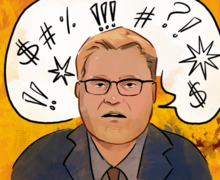Syracuse University professors discuss trends in college student drug use
Daily Orange File Illustration
Ignatius Ijere, a professor at Falk who specializes in addiction studies, said people gravitate toward drugs that they perceive to be low risk.
American college students use more marijuana and less opioids, a study from the University of Michigan found.
The researchers analyzed behavioral trends among college students since 1980 by administering surveys to between 1,000 and 1,500 college students annually.
The Monitoring the Future study found the number of college students who have reported using marijuana within the past 12 months has increased from 30 percent in 2006 to 38 percent in 2015.
Susan Scholl, the internship coordinator at the David B. Falk College of Sport and Human Dynamics, said with young people the belief that marijuana does not have negative effects has been a theme.
Ignatius Ijere, a professor at Falk who specializes in addiction studies, said people gravitate toward drugs that they perceive to be low risk.
“Technically, in addiction there’s nothing like high-risk or low-risk drugs,” Ijere said. “They all impact the neurons and the neurotransmitters.”
For example, Ijere said, studies have shown that marijuana use can create neurological damage that causes long-term memory loss and the inability to concentrate.
Just because marijuana use is not having a current neurological impact, it doesn’t mean it will not impact them later in life, Ijere said.
Marijuana use comes with more immediate risks, as well. When it comes to illicit drugs, the user can’t always be sure of whether the substance is laced. Scholl said she has seen cases of marijuana laced with Raid — an insect repellant.
“Marijuana use has been with us a long time. It’s going to continue to be with us. And like drug use itself, certain groups may wax and wane,” Scholl said.
The MTF study also found the use of opioids, such as heroin and painkillers, has decreased in college students. The study reported the percent of college students using heroin had dropped from 0.6 percent in 1998 to 0.1 percent in 2015.
Despite these results, Ijere said many studies have found heroin use remains high among college students, possibly because they want to remain relaxed while dealing with school demands.
“Heroin gives them that euphoric experience to be able to calm down,” Ijere said.
Scholl added that heroin use is on the rise with many groups of people. While the desired effect for young people may be euphoria, older people may use opioids for pain management.
“There are so many reasons that people use mood-altering chemicals. The reasons will change. They are as unique as the individual,” Scholl said. “And we’re always going to have mood-altering chemicals with us.”
Published on September 21, 2016 at 9:50 pm
Contact Nicole: nvalinot@syr.edu





